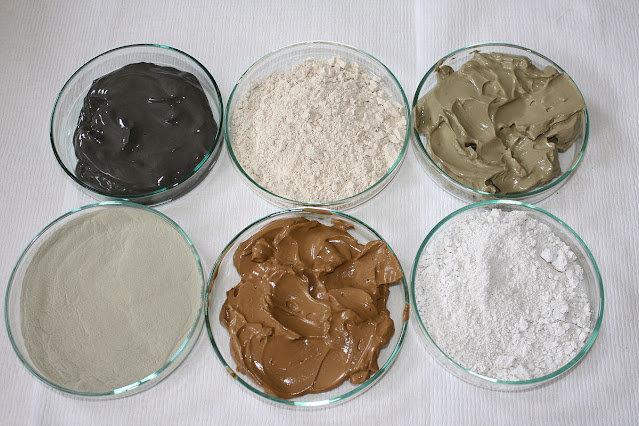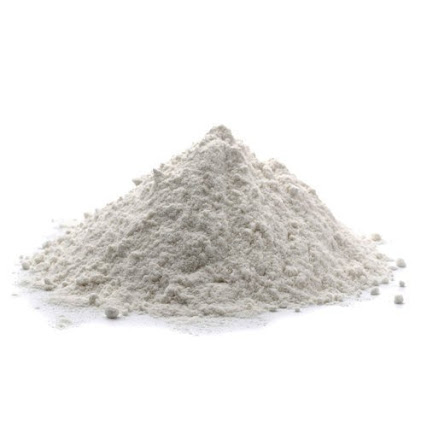Understanding the Different Types of Clay: A Comprehensive Guide
Clay has been used for various purposes throughout human history, from pottery and construction to beauty and skincare products. There are different types of clay available, each with its unique characteristics and uses. In this comprehensive guide, we will explore the various types of clay, their properties, and how they can be beneficial in different applications.
Clay has been used for various purposes throughout human history, from pottery and construction to beauty and skincare products. There are different types of clay available, each with its unique characteristics and uses. In this comprehensive guide, we will explore the various types of clay, their properties, and how they can be beneficial in different applications.
Clay is a natural substance that originates from the weathering of rocks over long periods. It is a versatile material with a range of applications, and its properties vary based on the type of clay and its composition. This guide aims to provide insights into the different types of clay available and their specific benefits.
What is Clay?
Clay is a fine-grained mineral substance composed mainly of hydrated aluminum silicates. Its unique structure gives it plasticity when moist, allowing it to be shaped and molded. When fired at high temperatures, clay becomes hard and durable, making it ideal for pottery and construction.
Bentonite Clay
Origins and Composition
Bentonite clay is derived from volcanic ash and is named after Fort Benton in Wyoming, USA. It has a high concentration of montmorillonite, giving it excellent absorptive properties.
Benefits and Uses
- Skin Care: Bentonite clay is known for its ability to draw out toxins and impurities from the skin, making it popular in skincare products.
- Digestive Health: When ingested, bentonite clay can help support digestive health and alleviate issues like bloating and constipation.
- Environmental Applications: Due to its absorbent nature, bentonite clay is used in
Kaolin Clay
Origins and Composition
Kaolin clay, also known as China clay, is a soft and gentle clay that originates from the weathering of aluminum silicate minerals. It is mostly found in China, but deposits exist in various parts of the world.
Benefits and Uses
- Skincare: Kaolin clay is suitable for sensitive skin and is often used in masks and facials to cleanse and exfoliate gently.
- Hair Care: It is used in hair products to remove excess oil and impurities from the scalp.
- Porcelain and Ceramics: Kaolin clay's pure white color and fine texture make it a popular choice for creating porcelain and ceramics.
When it comes to skincare and various applications, understanding the differences between Kaolin clay and Bentonite clay is essential.
Kaolin clay, also known as China clay, is gentle and suitable for sensitive skin, absorbing excess oil and impurities.
On the other hand, Bentonite clay, derived from volcanic ash, is more potent in drawing out toxins and treating acne-prone skin. Both clays offer unique benefits and can be used in masks, poultices, or even as natural cleansers.
Knowing their distinctive properties empowers you to make informed choices for your specific skincare needs and overall wellness."
Rhassoul Clay
Origins and Composition
Rhassoul clay, also known as Ghassoul clay, is found in the Atlas Mountains of Morocco. It is a natural mineral clay formed as a result of geothermal processes.
Benefits and Uses
- Hair Cleansing: Rhassoul clay acts as a natural shampoo and conditioner, cleansing the hair without stripping it of natural oils.
- Skin Detoxification: It is known for its detoxifying properties, making it beneficial for face masks and body wraps.
French Green Clay
Origins and Composition
French Green clay, or Illite clay, is named for its green color and is found in France. It is rich in minerals such as magnesium, calcium, and potassium.
Benefits and Uses
- Absorbing Excess Oil: French Green clay is excellent for absorbing excess oil and impurities from the skin, making it suitable for oily skin types.
- Body Wraps: It is often used in body wraps to detoxify and rejuvenate the skin.
Fuller's Earth Clay
Origins and Composition
Fuller's Earth clay is a type of bentonite clay with a high content of magnesium aluminum silicate. It is known for its strong absorbent properties.
Benefits and Uses
- Acne Treatment: Fuller's Earth clay is used in acne treatments to unclog pores and reduce inflammation.
- Absorbing Liquids: It is commonly used to absorb oils and liquids in various industrial applications.
Red Clay
Origins and Composition
Red clay gets its name from its distinct reddish-brown color, which comes from iron oxide content. It is found in many parts of the world.
Benefits and Uses
- Pottery: Red clay is a popular choice for pottery due to its rich color and workability.
- Soil Improvement: It can be used to improve soil fertility and structure in gardening.
White Clay
Origins and Composition
White clay, also known as Kaolinite, is the purest form of kaolin clay and has a neutral pH level.
Benefits and Uses
- Porcelain Production: White clay is a primary component in the production of porcelain.
- Cosmetics: It is used in various cosmetics and personal care products for its gentle nature.
Blue Clay
Origins and Composition
Blue clay derives its color from mineral content and is found in regions with a high concentration of specific minerals.
Benefits and Uses
- Detoxifying Baths: Blue clay is often used in baths for its detoxifying and revitalizing effects on the skin.
Terracotta Clay
Origins and Composition
Terracotta clay is a type of earthenware clay with a distinct orange-brown color, commonly used in pottery and sculpture.
Benefits and Uses
- Pottery and Sculpture: Terracotta clay's unique color and texture make it a popular choice for artistic creations.
- Cooking: It is used for making traditional cooking pots and pans.
Multani Mitti (Fuller's Earth)
Origins and Composition
Multani Mitti, also known as Fuller's Earth in India, is a type of clay with high magnesium aluminum silicate content.
Benefits and Uses
- Skincare: Multani Mitti is widely used in traditional skincare routines to cleanse and brighten the skin.
- Hair Care: It can also be used as a hair mask to promote hair health.
Conclusion
In conclusion, understanding the different types of clay and their unique properties can help you make informed choices when using them for various applications. From skincare and haircare to pottery and construction, the diverse uses of clay make it a valuable and versatile natural resource.
FAQs
Can I use clay masks on sensitive skin?
Clay masks made with gentle clays like Kaolin are suitable for sensitive skin types. However, it's advisable to do a patch test first.
How often should I use clay masks for my skin?
Depending on your skin type and the type of clay used, once or twice a week is generally sufficient.
Can clay be ingested for health benefits?
Yes, certain clays like Bentonite can be ingested for digestive health benefits. However, always consult a healthcare professional before doing so.
Are there any clays to avoid for dry skin?
Avoid clays with strong absorbent properties, like French Green clay, if you have dry skin. Opt for milder clays like White clay instead.
What is the best way to store clay products?
Store clay products in airtight containers away from moisture to maintain their effectiveness.




Comments
Post a Comment